A camping bag for clothes is more than just storage. Imagine this scenario: you find yourself surrounded by a landscape, taking in the fresh air, and embracing the peacefulness that only camping can provide.
However, here’s the catch: having a camping bag for your clothes can either make or break this experience.
Just picture having everything you need for the outdoors, including warm clothing and required accessories, organized and ready to go. This is where the magic of choosing a camping bag for clothes comes into play.
From ensuring your gear stays dry during rain showers to guaranteeing that your bag doesn’t weigh you down during hikes, we will cover it all.
Remember, you need some travel essentials in your backpack, like your best travel jumpsuit and your casual beach outfits, as well as your travel slippers.
The importance of a well-equipped camping bag for clothes
Unquestionably, in the realm of outdoor excursions, having a well-equipped camping backpack for your clothes may change the game.
Organization and Efficiency
Imagine searching through a disorganized pile of clothing in the midst of the bush for a certain item. Thanks to clearly designated locations for various types of clothing and accessories, you’ll find what you need quickly, saving you time and energy for the things that matter most.
Protection from the Elements
The weather might suddenly shift, and nature can be unexpected. Rain, dust, and other environmental factors may be protected against using a good camping bag made for clothing. Even in unexpected downpours or moist conditions, fabrics that are waterproof or resistant to water may keep your garments dry and ready to wear.
Comfortable Carrying
Getting to your campground on a long hike or journey can be physically taxing. A thoughtfully made camping bag considers your comfort. Your back and shoulders won’t be as stressed thanks to features like cushioned shoulder straps, hip belts, and ergonomic designs that help distribute the weight appropriately.
Maximizing Space
It takes skill to pack well, especially when there isn’t much room available. You can maximize the space you have by using a camping bag designed for clothing. You may pack more effectively so that you can bring all of your necessary clothing without the bag being too big by employing methods like rolling garments and compression packs.
Versatility and Adaptability
Various outdoor sports frequently require certain attire and equipment. Changes in clothing layers, footwear, and accessories may be accommodated by a well-equipped camping backpack, allowing you to adapt to a variety of situations. You will always be ready for any adventure because of your versatility.
Preserving Clothing Quality
Wrinkles, creases, and damage can result from tossing clothing carelessly into a suitcase. Your clothing may be better protected from unneeded wear and strain by using a specific camping bag made just for clothes. Carefully storing delicate materials and essential outdoor equipment ensures that they will be used without requiring a lot of ironing or repairs.
Convenience and Accessibility
This problem is resolved with a well-equipped camping bag. You’ll have quick access to anything you need thanks to the compartments’ excellent organization. No more searching through the entire bag for that one pair of socks.
Peace of Mind
Having everything you require close at hand when you’re outdoors gives you peace of mind. Without having to worry about your clothing’s accessibility or condition, you can concentrate on the wonder of nature, the excitement of adventure, and the fun of camping.
It guarantees that you are organized, at ease, and ready to enjoy every second of your camping trip.
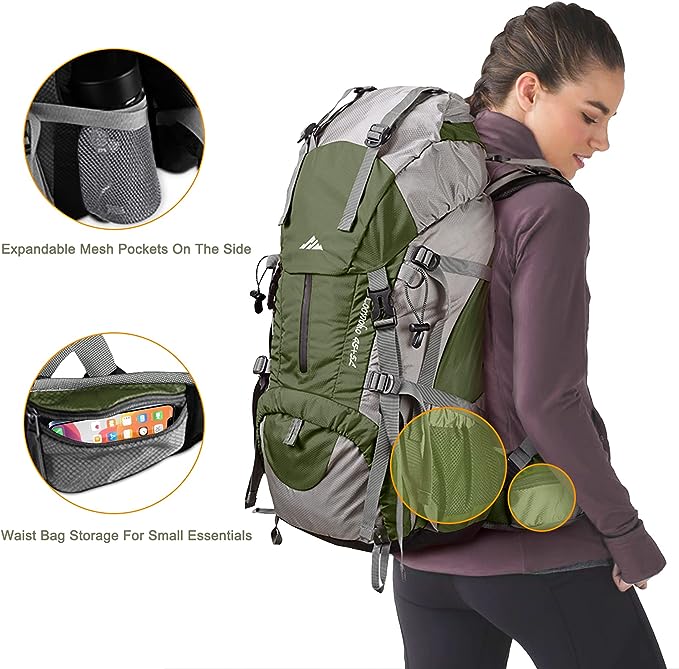

Types of Camping Bags
There are undoubtedly many different kinds of camping bags made to suit diverse demands and tastes. Some of the most typical varieties are listed below:
Backpacks
A key piece of camping equipment is the backpack. Features like cushioned back panels, adjustable shoulder straps, and hip belts properly disperse the weight, making them pleasant to carry even on strenuous hikes. They have several pockets and compartments for arranging equipment, and some versions come with hydration reservoir sleeves for easy water storage.
Duffel Bags
For campers who value the convenience of access to their possessions, duffel bags are adaptable choices. While some duffel bags have standard handles, others incorporate backpack-style shoulder straps for hands-free hauling.
Ultralight Backpacks
Ultralight backpacks are intended to reduce weight without losing the necessary functionality for seasoned and minimalist campers. These packs emphasize simplicity and practicality and are frequently constructed from strong yet lightweight materials.
Hydration Packs
Hydration packs are small backpacks with an integrated bladder-style water tank. For necessities like food, a tiny first aid kit, and a light jacket, they often have very little storage capacity.
Frame Packs
Frame packs are made to make it comfortable to carry large weights. For longer hiking journeys where you need to carry a lot of gear and supplies, these packs are frequently utilized.
Tote Bags or Daypacks
For carrying a few necessities like snacks, a water bottle, sunscreen, and a light jacket, tote bags are frequently fashionable and lightweight. Daypacks provide a little bit more room and could include additional sections for organization.
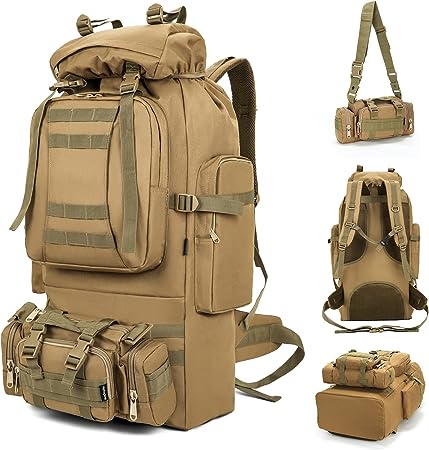

Essential Features to Look For
Observe the following:
Durability and Weather Resistance
Choose a camping bag composed of tough, long-lasting materials like Cordura, nylon, or polyester. To shield your clothing from rain and moisture, look for bags that have water-resistant or waterproof coverings.
Compartments and Organization
Time and frustration may be saved by having a well-organized suitcase. Pick a bag with several pockets, dividers, and sections. Keep clean and dirty items apart, arrange your accessories, and designate specific areas for each type of clothing. You may quickly discover stuff thanks to this organization without having to open your entire backpack.
Comfortable Straps and Carrying Options
Hip belts and bags with sternum straps that can be adjusted help distribute the weight more evenly, relieving stress on your back and shoulders.
Weight and Portability
Take into account the weight of the empty bag, as it will add to your overall load. If you’re planning lengthy walks or multi-day expeditions, using lightweight materials can really help. Some bags are also made to be foldable or collapsible for simple storage when not in use.
Size and Capacity
Pick a bag size that is appropriate for the number of clothes you need to bring and the duration of your camping trip. Shorter trips are ideal for daypacks, while longer ones call for heavier packs. Check the volume in liters or cubic inches to ensure it has enough for all of your necessities.
Ventilation and Breathability
In hot weather, perspiration accumulation and discomfort may be avoided with the use of bags with enough ventilation and permeable back panels.
Zippers and Fasteners
For simple access and a tight seal, high-quality fasteners are necessary. Choose strong zippers that won’t fray or snag easily. Lockable zippers are available on certain bags for increased security.
Attachment Points and Loops
The backpack’s outside has hooks and attachment points that are useful for carrying things like water bottles, trekking poles, or even a sleeping bag.
Warranty and Quality Assurance
Invest in a bag from a trusted brand that is recognized for its high caliber and durability.
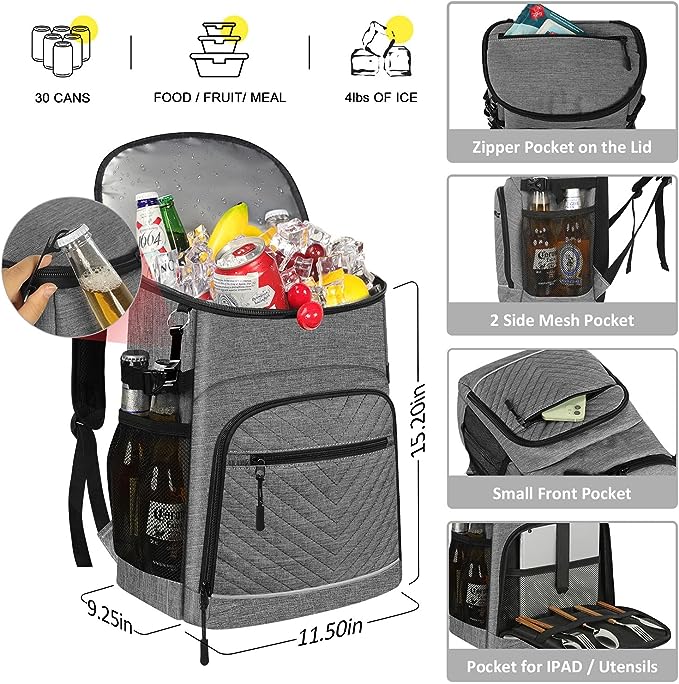
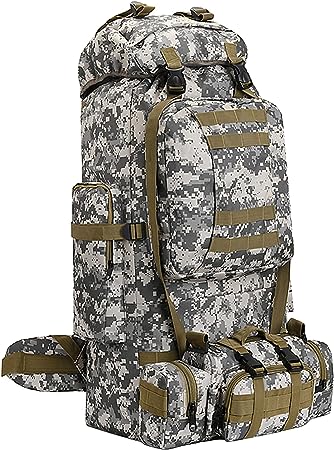
Packing Strategies
How well your outdoor journey goes can be significantly affected by how effectively you pack your camping backpack with clothes. Here are some sensible packing techniques to take into account:
Roll and compress
Your clothing should be securely rolled up rather than folded. Compression packs or packing cubes can be used to better arrange your belongings and maximize space.
Utilize Packing Cubes or compartments
Packing cubes can be extremely helpful for organizing your pack and grouping like goods together. Sort items into groups according to their types, such as shirts in one cube, pants in another, and underwear in a smaller cube.
Layering Technique
Put heavier and more durable objects closer to your back, toward the bottom of your bag. Better balance and weight distribution are produced as a result. You may put softer, lighter objects on top. Additionally, you may layer items according to usage, putting your nightwear at the bottom and your daily attire on top for convenience.
Separate Clean and Dirty clothes
Clean garments should be packed in a separate waterproof or water-resistant bag. This keeps dirty goods separate from clean ones and keeps your freshly laundered clothing odor-free and ready to wear. You may continue to put dirty laundry in the appropriate bag while your journey goes on.
Keep Frequently Used Items Accessible
Put goods you’ll need during the day, like your water bottle, food, map, or small first aid kit, in conveniently accessible pockets or compartments. You won’t have to search through your entire backpack every time you need anything important if you do this.
Distribute Weight evenly
Spread the weight equally if your camping backpack includes many pockets or sections. To avoid the bag tilting or tugging to one side, heavy things should be evenly distributed on both sides. Since the weight is distributed evenly, carrying the bag is more stable and comfortable.
Protect Fragile items
Use cushioned bags or covers for delicate things like electronics or delicate objects like eyewear to prevent harm. For further security, you may wrap fragile objects in soft apparel like a scarf or beanie.
Minimize Unnecessary items
Concentrate on the necessities to avoid overpacking. Although it may be tempting to carry your full wardrobe, bringing only a few adaptable outfits that go well with other things can conserve room. You may pack less by using multi-purpose products like reversible clothing or coats with detachable linings.
Trial Packing and Adjustments
Prepare for your camping vacation by practicing packing at home. If you experience any pain or inefficiency, you may also change your packing technique.
Pack Methodically
Think about where each item will go while you pack.
Always keep in mind that successful packing requires practice.
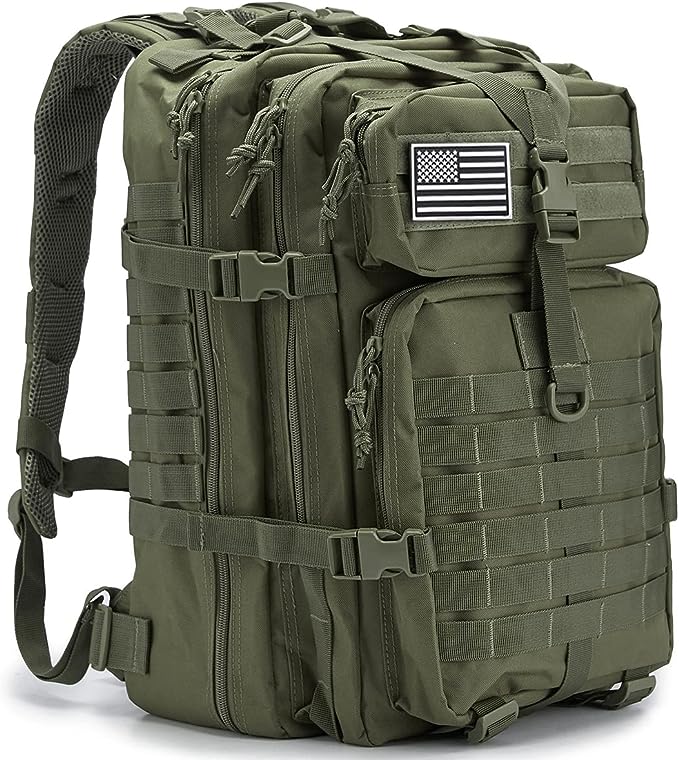
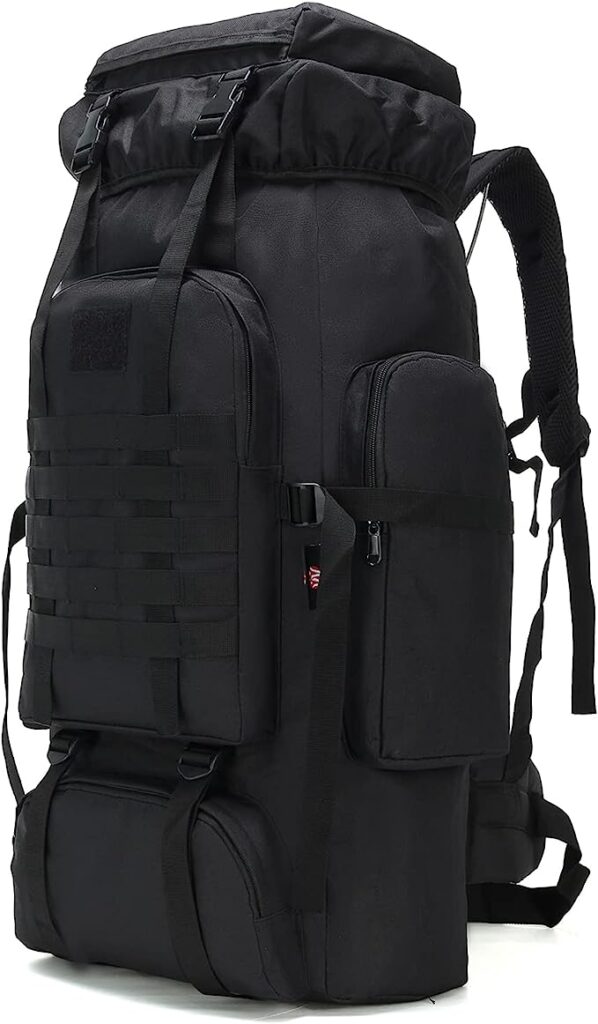
Maintenance and Care
Your camping bag for clothes has to be cared for and maintained in order to last a long time and perform as intended. Here is some advice on how to take care of and maintain your camping bag:
Cleaning
Take these actions:
Fill the bag to the brim.
Remove loose dirt and debris by shaking.
Apply a moist sponge or towel to the inside and exterior to clean.
Use a mild soap or professional bag cleaner for stubborn stains.
Drying
Allow the bag to completely dry after washing it or if it becomes wet while you’re traveling. Drying properly stops the formation of mold and mildew, which might harm the bag’s components.
Hang the bag somewhere with good airflow.
Prolonged exposure to strong heat can harm textiles and materials, so keep them away from heat sources like the sun and heaters.
Storage
When not in use, carefully storing your camping bag ensures that it keeps its form and durability.
Keep the bag out of the sun and severe temperatures in a cool, dry location.
A long period of folding the bag might result in wrinkles that could eventually become permanent.
To keep the bag’s form, hang it up or store it upright if you can.
Zipper Care
Your bag’s zippers are key parts, so maintaining them is crucial for simple access and closure.
Before and after each use, lightly brush away dirt to keep the zippers clean.
To prevent sticking, sometimes lubricate zippers using a zipper-specific lubricant or wax.
Inspect for damage
Early resolution of minor difficulties can prevent them from developing into bigger concerns.
Avoid Overloading
Avoid the urge to stuff your bag more than it can hold because this might put stress on the zippers, seams, and straps.
Use Rain covers
Consider using a rain cover in damp situations if your bag doesn’t already have built-in water resistance.
Follow the manufacturer’s guidelines
Always follow the cleaning directions and suggestions provided by the manufacturer for your particular bag type.
Personalization
By affixing your name tag or any distinctive identification, you may readily identify your bag.
You can keep your camping bag for clothing in peak shape and make sure it’s prepared to go on several outdoor adventures according to these maintenance and care procedures.

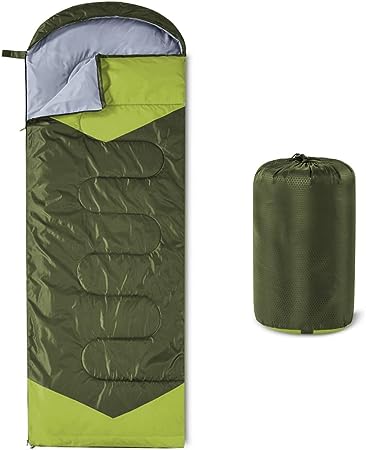
Conclusion
Your camping bag is a dependable friend that keeps your clothing organized, safe, and accessible.
With the correct bag, you can confidently handle any terrain and weather condition, from rocky routes to peaceful campgrounds.
Keep in mind that your partners in the art of effective packing are rolling, stacking, and using compartments.
So, keep in mind that your camping bag for clothes is more than simply a container when you go out to see nature’s beauties.
What are your thoughts about a camping bag for clothes?
Why book with Viator.com? Do more with Viator
For Top Destinations! Top Attractions! Top Tours. Just get the best out of Viator today.

Ivisa.com helps you find Visa information for all countries. Simplifying Travel Around The World and also offers Online Travel Visa Checks.

I recommend Booking.com because is a great place for hotel bookings with No Booking Fees. Low Rates. Best Price Guarantee.

Trip.com is another good website where you can make your flight bookings with Low-cost flights and easy booking with Instant confirmation.

We could receive a little commission. if you purchase after clicking one of our links. This helps us to maintain the website, and we sincerely appreciate it.
